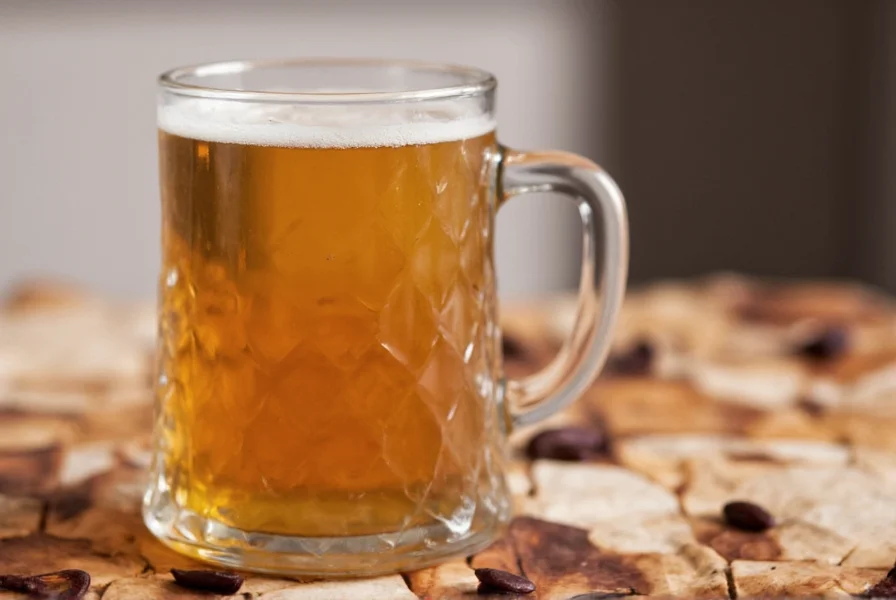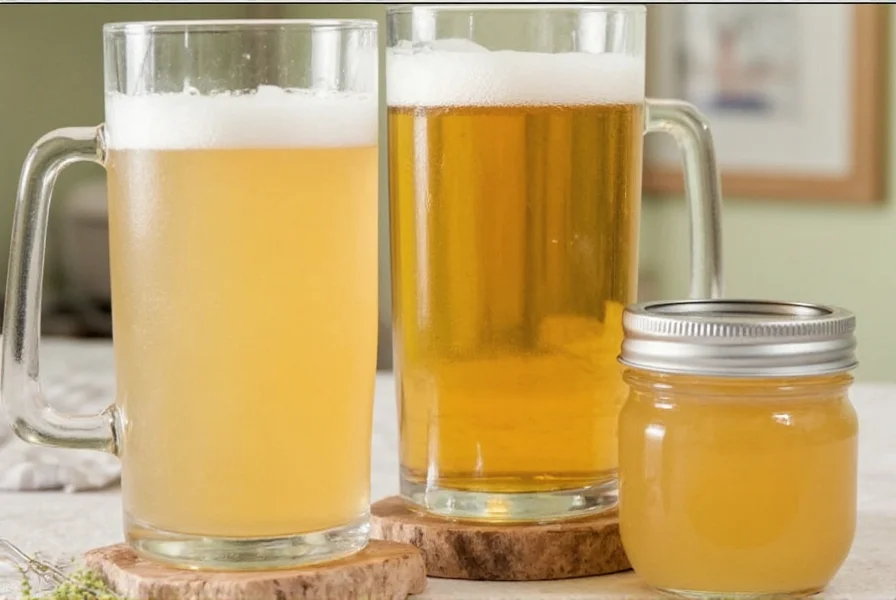Making authentic house made ginger beer at home offers complete control over ingredients and fermentation process, resulting in a healthier alternative to commercial versions filled with artificial additives. This traditional method produces a naturally carbonated beverage with beneficial probiotics while allowing you to adjust spice levels and sweetness to your exact preference.
The Science Behind Homemade Ginger Beer
Understanding the fermentation process is crucial for successful house made ginger beer production. The ginger root contains natural enzymes and wild yeast that, when combined with sugar and water, create the perfect environment for fermentation. During this biological process, microorganisms convert sugars into carbon dioxide (creating natural carbonation) and trace amounts of alcohol (typically under 0.5% when properly controlled).
Unlike commercial ginger beers that often use forced carbonation and artificial flavors, authentic homemade versions develop complex flavor compounds through natural fermentation. The gingerol compounds in fresh ginger provide both the characteristic heat and numerous health benefits, including digestive support and anti-inflammatory properties.

Essential Equipment and Ingredients
Creating quality house made ginger beer requires minimal specialized equipment. Most home brewers already have the necessary items in their kitchen:
| Equipment | Why It's Important |
|---|---|
| Glass or food-grade plastic containers | Avoids chemical reactions with acidic ingredients |
| Plastic or wooden spoons | Prevents metal contamination during fermentation |
| Swing-top glass bottles | Safely contains carbonation pressure during secondary fermentation |
| Fine mesh strainer | Removes ginger pulp for clear final product |
Step-by-Step Brewing Process
Follow these precise steps for reliable results when making ginger beer from scratch:
Creating Your Ginger Bug Starter (3-5 days)
The foundation of authentic house made ginger beer is a healthy ginger bug starter. This natural fermentation culture replaces commercial yeast and creates superior flavor:
- Combine 2 tablespoons freshly grated ginger, 2 tablespoons sugar, and 1 cup filtered water in a clean jar
- Cover with breathable cloth and secure with rubber band
- Feed daily with equal parts fresh ginger and sugar
- After 3-5 days, bubbles will form and it will smell pleasantly tangy
- Your starter is ready when it consistently produces bubbles within hours of feeding
Primary Fermentation (2-3 days)
Once your ginger bug is active, proceed with the main brew:
- Prepare ginger tea: Simmer 1 cup grated ginger in 4 cups water for 20 minutes
- Add 1½ cups sugar and stir until dissolved
- Cool to room temperature (critical step to avoid killing cultures)
- Strain into fermentation vessel and add ½ cup active ginger bug
- Cover with cloth and ferment at room temperature for 48 hours
Bottling and Carbonation (3-5 days)
The secondary fermentation creates natural carbonation:
- Strain liquid through fine mesh into clean bottles, leaving sediment behind
- Add 1 teaspoon sugar per 16oz bottle to feed remaining yeast
- Seal bottles tightly and store at room temperature
- Check daily for carbonation level (gently press bottle to feel firmness)
- Refrigerate once desired carbonation is reached to halt fermentation

Safety Considerations for Homemade Ginger Beer
While house made ginger beer is generally safe, proper technique prevents common issues:
- Pressure management: Always use proper fermentation-safe bottles and refrigerate once carbonated to prevent explosions
- Hygiene: Sterilize all equipment to prevent contamination from unwanted bacteria
- Sugar levels: Too much sugar can create excessive pressure; follow recommended measurements
- Alcohol content: Properly controlled fermentation keeps alcohol below 0.5%, but extended fermentation increases levels
Troubleshooting Common Issues
Even experienced home brewers encounter challenges with house made ginger beer. Here's how to address frequent problems:
- Not carbonating: Check if ginger bug was active, ensure proper sugar amount for secondary fermentation, verify bottles are airtight
- Too spicy: Reduce ginger quantity in next batch or strain more thoroughly before bottling
- Cloudy appearance: Normal in homemade versions; strain through cheesecloth for clearer results
- Overly sour: Shorten primary fermentation time or reduce ginger bug amount
- Mold formation: Discard immediately; indicates contamination from improper hygiene
Flavor Variations and Customization
One of the greatest advantages of house made ginger beer is customization. Experiment with these natural additions:
- Lemon or lime zest: Adds bright citrus notes that complement ginger's spice
- Fresh herbs: Mint, basil, or rosemary create complex flavor profiles
- Fruit juices: Add during bottling for natural sweetness and flavor (apple, pineapple, or berry)
- Spice infusions: Cinnamon sticks, cloves, or cardamom pods during ginger tea preparation
- Heat adjustment: Peel ginger for milder flavor or leave skin on for more intense spice
Storage and Serving Recommendations
Proper storage maintains quality and safety of your homemade ginger beer:
- Refrigerate after desired carbonation level is reached to slow fermentation
- Consume within 2-3 weeks for optimal flavor and carbonation
- Always open bottles over a sink and chill thoroughly before serving
- Pair with meals featuring spicy or rich flavors that benefit from ginger's digestive properties
- Use as a mixer in cocktails for a natural, preservative-free alternative










 浙公网安备
33010002000092号
浙公网安备
33010002000092号 浙B2-20120091-4
浙B2-20120091-4